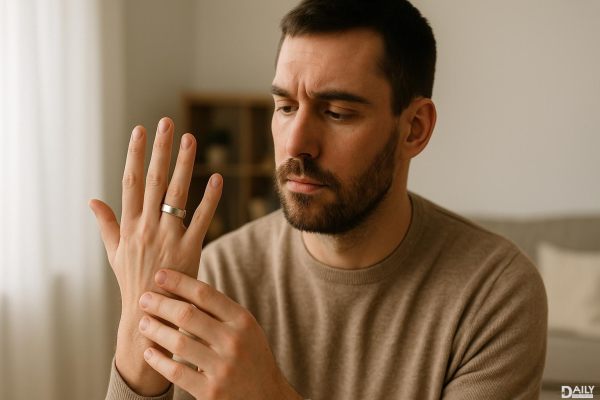Men wear rings on every finger, and each placement carries its own unique meaning—whether it's a statement of love, power, or personal identity. From wedding bands on the left ring finger to pinky rings signaling wealth or rebellion, the choice isn't just about style—it's a silent language. Let’s break down the hidden messages behind where men slide on their rings and what it says about them.

If you spot a guy rocking a ring on his pinky, there’s a good chance he’s either channeling old-school mobster vibes or subtly flexing his success. Historically, pinky rings were associated with wealth and influence—think 1920s gangsters or British aristocrats. Today, they’ve evolved into a bold fashion statement, often linked to confidence (or a hint of mischief). Some fraternal organizations, like the Freemasons, also use pinky rings as symbols of membership. Whether it’s a chunky signet ring or a sleek gold band, this finger screams, "I’ve got something to say."
Traditionally, the left ring finger is reserved for wedding bands in Western cultures—thanks to the ancient belief that a "vein of love" (the vena amoris) runs straight to the heart. But not every ring here means "I do." Some men wear promise rings, family heirlooms, or even fashion rings on this finger. In countries like Germany and Russia, wedding rings go on the right hand instead. And let’s not forget the rising trend of "right-hand rings"—a solo statement piece that says, "I’m celebrating myself."
Sliding a ring onto the middle finger is like throwing subtlety out the window—it’s the tallest, most dominant finger, so anything worn here demands attention. While it doesn’t carry deep traditional meaning, it’s often chosen by guys who want their jewelry to make a statement without being tied to romantic or societal symbolism. Think bold signet rings, oversized designs, or even a family crest. It’s the finger equivalent of wearing a leather jacket—unapologetically cool.
Historically, rings on the index finger signaled authority—kings and nobles wore signet rings here to seal documents with wax stamps. Today, it’s a go-to for men who want to project leadership or ambition. In some cultures, like Orthodox Judaism, wedding bands are placed here during the ceremony. Others simply like the way a ring looks on this prominent finger, especially if it’s a striking piece like a sovereign ring or a textured band. It’s the finger of decision-makers and trendsetters.
Thumb rings are the rebels of hand jewelry—unconventional, eye-catching, and packed with personality. In ancient times, archers wore them to protect their thumbs while drawing bowstrings. Now, they’re a favorite among artists, creatives, and guys who march to their own beat. In some Asian cultures, thumb rings symbolize wealth or health. Whether it’s a wide silver band or a minimalist design, this placement screams individuality. Just don’t be surprised if people assume you’re the most interesting person in the room.
Why stick to one ring when you can layer them? Stacking rings across multiple fingers is a growing trend, blending symbolism with personal flair. Maybe it’s a wedding band paired with a birthstone ring, or a pinky signet next to a thumb ring—each combo tells a story. The key is balance: too many bulky rings can look chaotic, while a curated mix adds depth. It’s like building an outfit—every piece should have a purpose.
From pinky rings dripping with history to thumb rings that defy tradition, where a man wears his jewelry speaks volumes. Whether it’s cultural significance, personal pride, or just killer style, every finger has its own story. So next time you slide on a ring, ask yourself: What’s this saying about me?
























